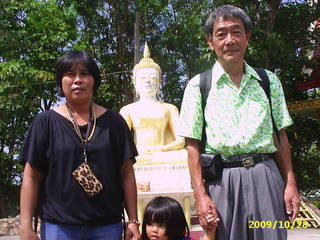2016年02月08日
地方の未来 移住促進へ文化力を生かそう
The Yomiuri Shimbun
Use cultural power to promote migration to provincial areas
地方の未来 移住促進へ文化力を生かそう
The excessive concentration of people and industry in the Tokyo metropolitan area continues. How can we create a flow of people to provincial areas where the population is decreasing?
東京圏への一極集中が止まらない。人口減少が続く地方への人の流れをいかに作り出すか。
Attracting people by utilizing their inherent cultures and uncovering alluring features unique to particular areas will be an important consideration.
地域文化を生かして固有の魅力を発掘し、人を呼び込む視点が肝要だろう。
According to a 2015 population migration report compiled by the Internal Affairs and Communications Ministry, people who moved into the Tokyo metropolitan area numbered nearly 120,000 more than those who had moved out of it. For 20 straight years, the number of people who moved into the metropolitan area exceeded the number of those who moved out.
総務省の2015年の人口移動報告で、東京圏への転入者が転出者を12万人近く上回った。20年連続の転入超過である。
Among Japan’s three largest urban sprawls, however, more people have left the Osaka and Nagoya areas compared to those who have moved in.
3大都市圏でも、大阪、名古屋圏は逆に転出者の方が多い。
In its comprehensive strategy for “vitalization of local economies,” the government aims to equalize the figures of those moving into and out of the metropolitan area by 2020. However, if nothing is done to change the current situation, it will be impossible to achieve this goal. Genuine efforts must be made to promote the migration of people to provincial areas.
政府は「地方創生」の総合戦略で、20年に東京圏から地方への転出と転入を均衡させる目標を掲げた。現状を放置していては、目標達成は見通せない。地方移住の促進に本腰を入れる必要がある。
How can the attractions of provincial areas be made to shine and conveyed elsewhere? First, the number of visitors to those areas should be increased by organizing sightseeing, homecoming and migration tours. In addition to migration, the return of people to provincial areas must be carried forward by aiming to realize “residency in two areas” − or the lifestyle of moving back and forth between urban and provincial areas.
地域の魅力をどう磨き、発信するか。まずは観光や帰省、移住を誘うツアーによる来訪者を増やしたい。移住に加え、都市と地方を往還する「2地域居住」も目指し、地方回帰を進めねばならない。
The cultural powers rooted in each area should be used. There are various kinds of cultural resources − such as history, cultural property, traditional arts, customs, local cuisine and scenery − but some provincial areas have not yet identified their values.
活用したいのが、地域に根づく文化の力だ。歴史や文化財、伝統芸能、習俗、郷土食、景観など、文化資源は数多いが、価値に気づいていない地域もあろう。
Discovering hidden assets
Both the public and private sectors should unearth hidden cultural resources and disseminate information about them domestically and internationally in a variety of creative ways, including promotional videos.
埋もれた資源を官民で掘り起こし、PR動画を含め、工夫を凝らして国内外に発信したい。
Good use should be made of “Japan Heritage,” a system launched last year by the Cultural Affairs Agency.
文化庁が昨年、設けた「日本遺産」をうまく使ってはどうか。
Under the system, cultural resources scattered in provincial areas that are connected by a “story” are considered heritages. So far, 18 resources have been recognized following applications from local governments.
地域に点在する文化資源を結びつける「物語」を遺産としてとらえる制度だ。自治体の申請に基づき、計18件が認定されている。
For example, the Shikoku Henro, straddling 57 municipalities in the Shikoku region, is considered a piece of heritage based on the culture of pilgrimage routes. Akari Mau Hanto Noto (Noto peninsula of dancing lights) is a piece of heritage focusing on the Kiriko Matsuri traditional lantern float festivals handed down in six Ishikawa Prefecture municipalities.
四国の57市町村にまたがる「四国遍路」は、巡礼文化をたどる遺産だ。「灯あかり舞う半島 能登」は石川県の6市町に息づく伝統のキリコ祭りにスポットを当てた。
Such heritages should be developed as tourism resources. They are expected to have the effect of attracting not only Japanese people but also visitors to Japan from abroad.
観光資源として整備したい。日本人だけでなく、訪日外国人客を誘導する効果も期待できる。
Local governments must work jointly with local residents to find candidates for Japan Heritage. Such efforts would also help local people create a sense of pride in their regions, and nurture human resources to lead development of those areas.
自治体が住民と協力して遺産候補を探すことが大切だ。郷土への誇りを培い、地域づくりを先導する人材の育成にも役立とう。
It is also important to consider the increasing number of vacant houses and retail premises, and abolished school buildings, as assets, and try to reuse them as accommodations and operational bases for migrating workers and other people.
増え続ける空き家や空き店舗、廃校舎を資源ととらえ、移住者らの滞在施設や活動拠点として再利用する発想も欠かせない。
For example, the village of Higashi-Yoshino, Nara Prefecture, renovated a vacant house into a shared office last year. Working conditions in the mountain village became popular via the Internet, and five people have already migrated to work there.
奈良県東吉野村は昨年、空き家を共有オフィスに改装した。山里の作業環境がネット上で評判を呼び、既に5人が移住した。
According to a survey by the Cabinet Office, nearly 40 percent of urban residents in their 20s indicated that they wish to settle down in farming, fishing or mountain villages. The attractions of working in traditional village culture should be presented to young people wishing to live outside of urban areas to entice them into provincial areas.
内閣府調査によると、都会の20歳代の4割近くが農山漁村への定住願望を抱く。里山文化を体感して働く魅力を提案し、ローカル志向の若者を呼び込みたい。
The government should place importance on vitalization of local economies with cultural power. We expect the central government to help local governments tap their cultural resources and connect such efforts to a correction of the excessive concentration of people and industry in the metropolitan area.
政府は、文化力による地方創生を重視すべきだ。自治体の文化資源の活用を後押しし、一極集中の是正につなげてもらいたい。
(From The Yomiuri Shimbun, Feb. 6, 2016)
Use cultural power to promote migration to provincial areas
地方の未来 移住促進へ文化力を生かそう
The excessive concentration of people and industry in the Tokyo metropolitan area continues. How can we create a flow of people to provincial areas where the population is decreasing?
東京圏への一極集中が止まらない。人口減少が続く地方への人の流れをいかに作り出すか。
Attracting people by utilizing their inherent cultures and uncovering alluring features unique to particular areas will be an important consideration.
地域文化を生かして固有の魅力を発掘し、人を呼び込む視点が肝要だろう。
According to a 2015 population migration report compiled by the Internal Affairs and Communications Ministry, people who moved into the Tokyo metropolitan area numbered nearly 120,000 more than those who had moved out of it. For 20 straight years, the number of people who moved into the metropolitan area exceeded the number of those who moved out.
総務省の2015年の人口移動報告で、東京圏への転入者が転出者を12万人近く上回った。20年連続の転入超過である。
Among Japan’s three largest urban sprawls, however, more people have left the Osaka and Nagoya areas compared to those who have moved in.
3大都市圏でも、大阪、名古屋圏は逆に転出者の方が多い。
In its comprehensive strategy for “vitalization of local economies,” the government aims to equalize the figures of those moving into and out of the metropolitan area by 2020. However, if nothing is done to change the current situation, it will be impossible to achieve this goal. Genuine efforts must be made to promote the migration of people to provincial areas.
政府は「地方創生」の総合戦略で、20年に東京圏から地方への転出と転入を均衡させる目標を掲げた。現状を放置していては、目標達成は見通せない。地方移住の促進に本腰を入れる必要がある。
How can the attractions of provincial areas be made to shine and conveyed elsewhere? First, the number of visitors to those areas should be increased by organizing sightseeing, homecoming and migration tours. In addition to migration, the return of people to provincial areas must be carried forward by aiming to realize “residency in two areas” − or the lifestyle of moving back and forth between urban and provincial areas.
地域の魅力をどう磨き、発信するか。まずは観光や帰省、移住を誘うツアーによる来訪者を増やしたい。移住に加え、都市と地方を往還する「2地域居住」も目指し、地方回帰を進めねばならない。
The cultural powers rooted in each area should be used. There are various kinds of cultural resources − such as history, cultural property, traditional arts, customs, local cuisine and scenery − but some provincial areas have not yet identified their values.
活用したいのが、地域に根づく文化の力だ。歴史や文化財、伝統芸能、習俗、郷土食、景観など、文化資源は数多いが、価値に気づいていない地域もあろう。
Discovering hidden assets
Both the public and private sectors should unearth hidden cultural resources and disseminate information about them domestically and internationally in a variety of creative ways, including promotional videos.
埋もれた資源を官民で掘り起こし、PR動画を含め、工夫を凝らして国内外に発信したい。
Good use should be made of “Japan Heritage,” a system launched last year by the Cultural Affairs Agency.
文化庁が昨年、設けた「日本遺産」をうまく使ってはどうか。
Under the system, cultural resources scattered in provincial areas that are connected by a “story” are considered heritages. So far, 18 resources have been recognized following applications from local governments.
地域に点在する文化資源を結びつける「物語」を遺産としてとらえる制度だ。自治体の申請に基づき、計18件が認定されている。
For example, the Shikoku Henro, straddling 57 municipalities in the Shikoku region, is considered a piece of heritage based on the culture of pilgrimage routes. Akari Mau Hanto Noto (Noto peninsula of dancing lights) is a piece of heritage focusing on the Kiriko Matsuri traditional lantern float festivals handed down in six Ishikawa Prefecture municipalities.
四国の57市町村にまたがる「四国遍路」は、巡礼文化をたどる遺産だ。「灯あかり舞う半島 能登」は石川県の6市町に息づく伝統のキリコ祭りにスポットを当てた。
Such heritages should be developed as tourism resources. They are expected to have the effect of attracting not only Japanese people but also visitors to Japan from abroad.
観光資源として整備したい。日本人だけでなく、訪日外国人客を誘導する効果も期待できる。
Local governments must work jointly with local residents to find candidates for Japan Heritage. Such efforts would also help local people create a sense of pride in their regions, and nurture human resources to lead development of those areas.
自治体が住民と協力して遺産候補を探すことが大切だ。郷土への誇りを培い、地域づくりを先導する人材の育成にも役立とう。
It is also important to consider the increasing number of vacant houses and retail premises, and abolished school buildings, as assets, and try to reuse them as accommodations and operational bases for migrating workers and other people.
増え続ける空き家や空き店舗、廃校舎を資源ととらえ、移住者らの滞在施設や活動拠点として再利用する発想も欠かせない。
For example, the village of Higashi-Yoshino, Nara Prefecture, renovated a vacant house into a shared office last year. Working conditions in the mountain village became popular via the Internet, and five people have already migrated to work there.
奈良県東吉野村は昨年、空き家を共有オフィスに改装した。山里の作業環境がネット上で評判を呼び、既に5人が移住した。
According to a survey by the Cabinet Office, nearly 40 percent of urban residents in their 20s indicated that they wish to settle down in farming, fishing or mountain villages. The attractions of working in traditional village culture should be presented to young people wishing to live outside of urban areas to entice them into provincial areas.
内閣府調査によると、都会の20歳代の4割近くが農山漁村への定住願望を抱く。里山文化を体感して働く魅力を提案し、ローカル志向の若者を呼び込みたい。
The government should place importance on vitalization of local economies with cultural power. We expect the central government to help local governments tap their cultural resources and connect such efforts to a correction of the excessive concentration of people and industry in the metropolitan area.
政府は、文化力による地方創生を重視すべきだ。自治体の文化資源の活用を後押しし、一極集中の是正につなげてもらいたい。
(From The Yomiuri Shimbun, Feb. 6, 2016)
【このカテゴリーの最新記事】
-
no image
-
no image
-
no image
-
no image
-
no image
この記事へのコメント
コメントを書く





